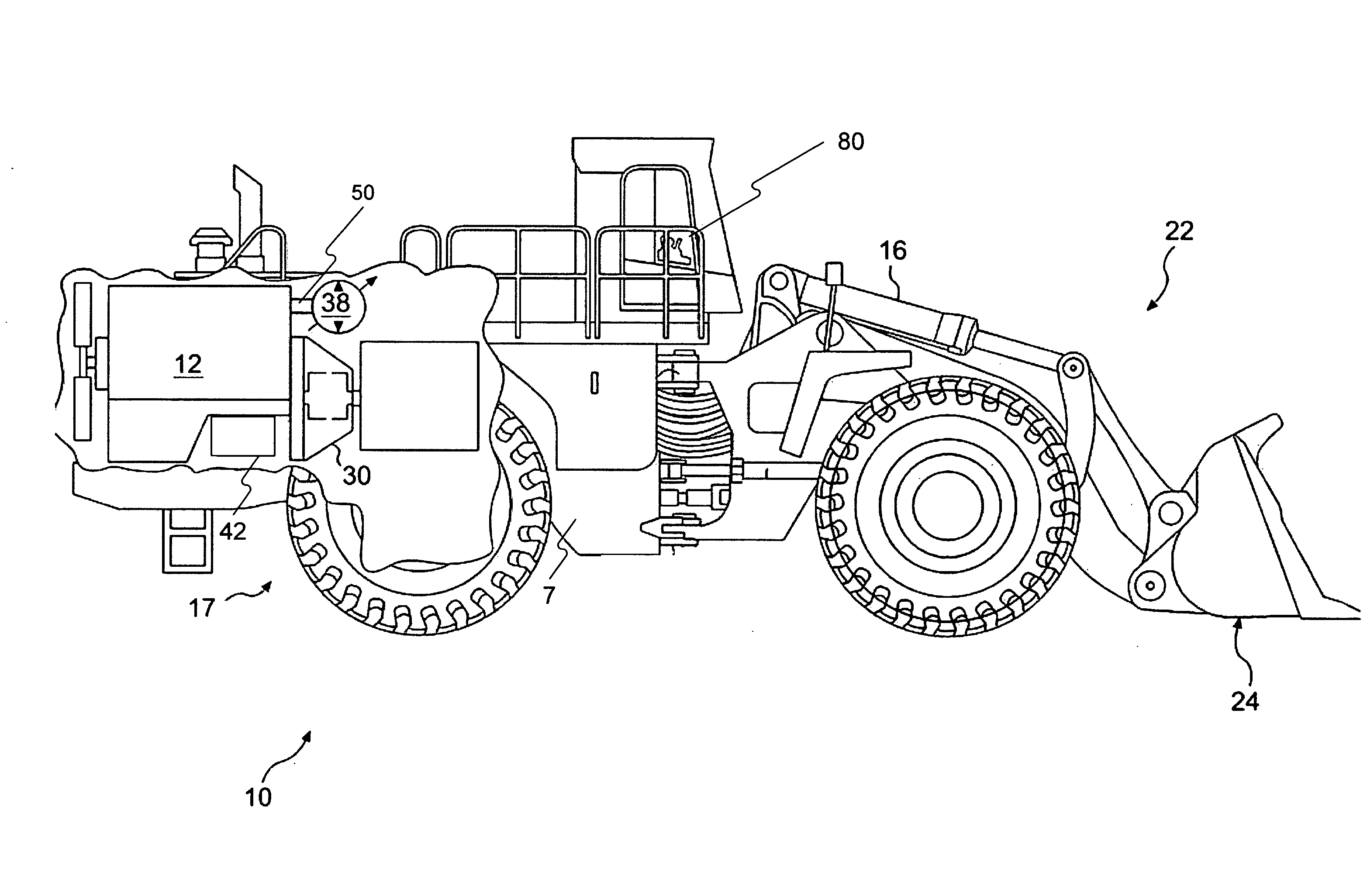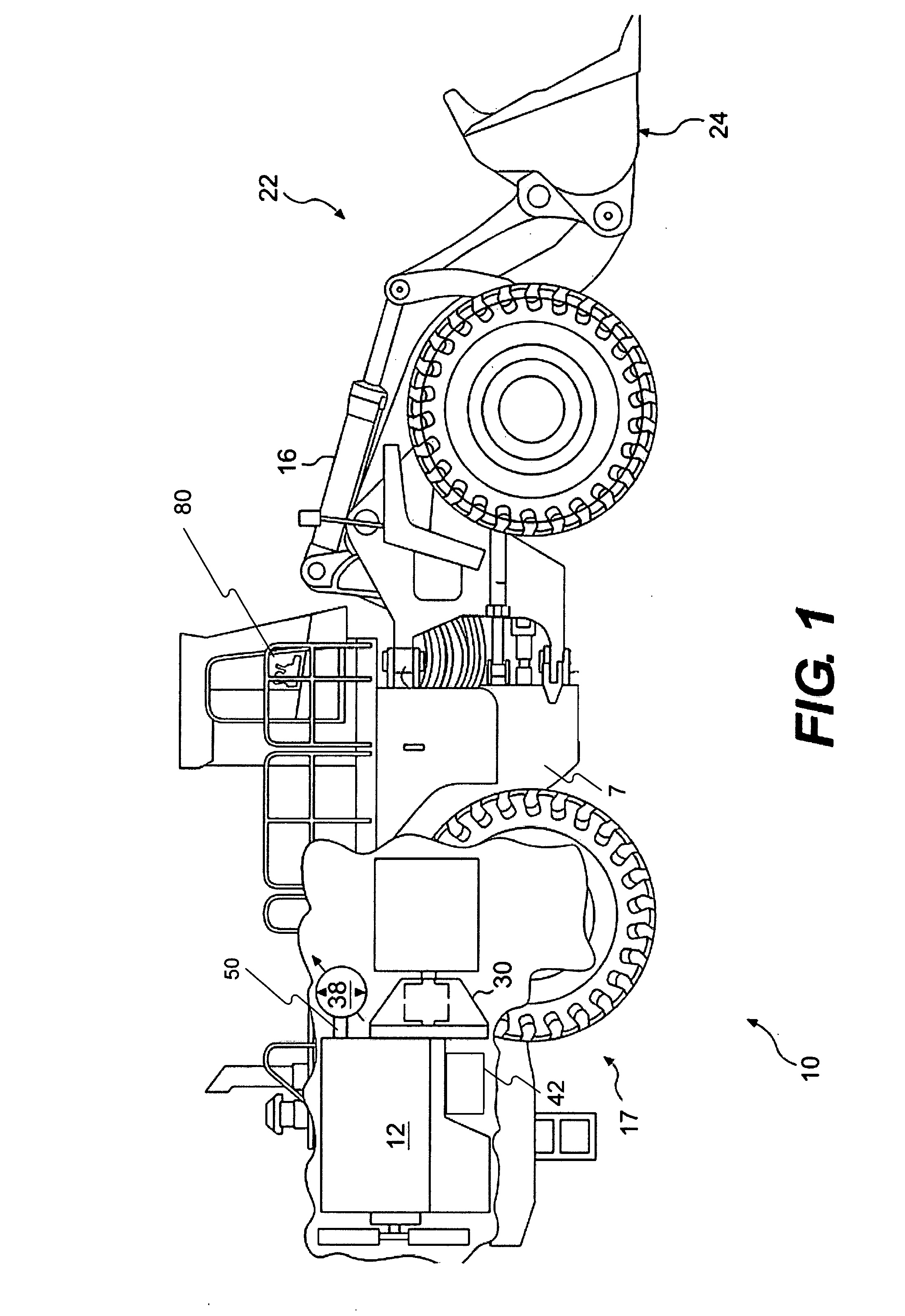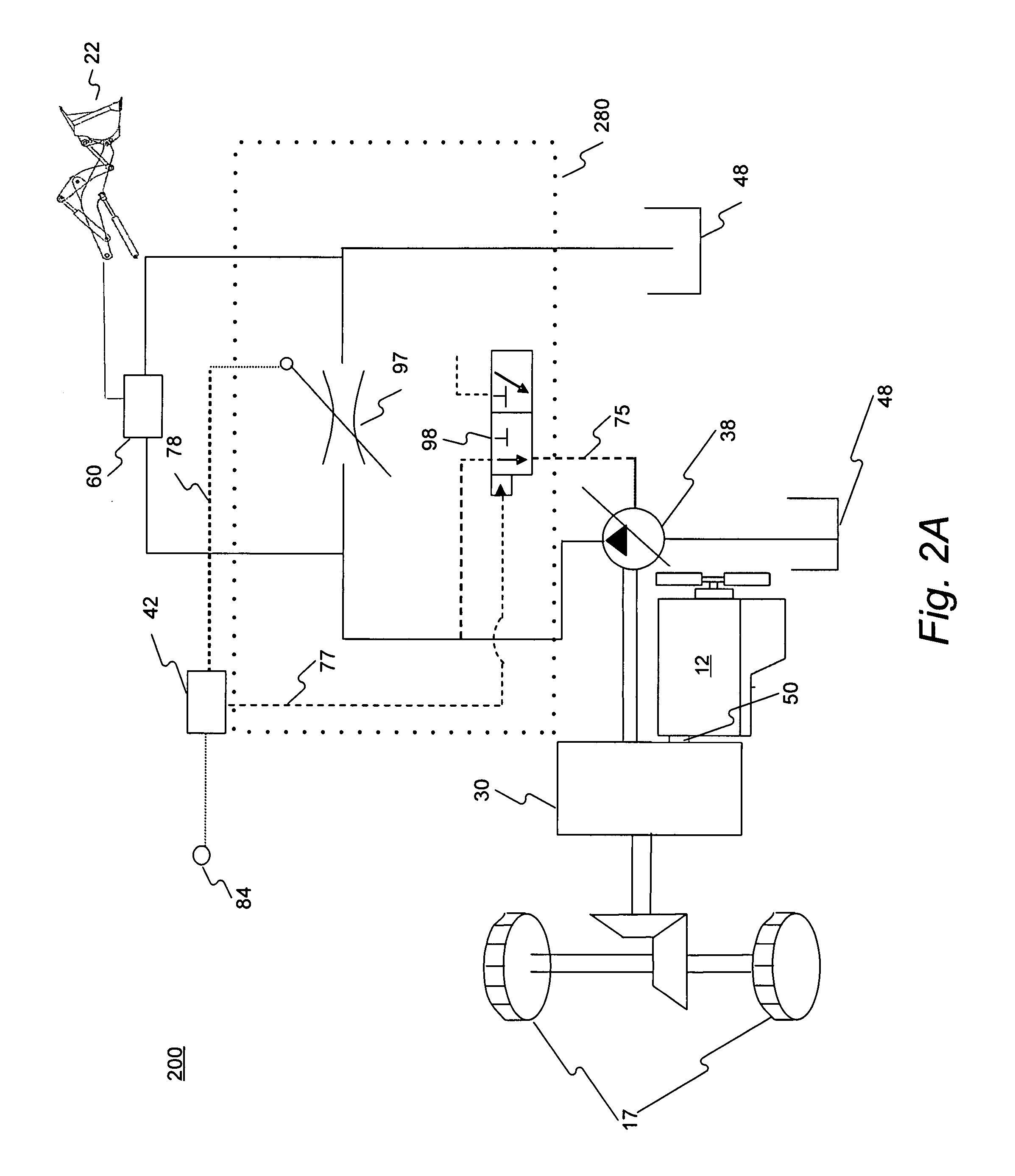Machine retarder
a retarder and machine technology, applied in the direction of fluid couplings, positive displacement liquid engines, couplings, etc., can solve the problems of premature wear of the braking system, increased rotational speed of the power source, and machine may develop significant momentum
- Summary
- Abstract
- Description
- Claims
- Application Information
AI Technical Summary
Benefits of technology
Problems solved by technology
Method used
Image
Examples
Embodiment Construction
[0014]FIG. 1 illustrates an exemplary embodiment of a machine 10. Machine 10 may be a mobile machine that performs some type of operation associated with an industry such as mining, construction, farming, or any other industry known in the art. For example, machine 10 may be an earth moving machine such as a wheel loader, a dump truck, a backhoe, a motor grader, or any suitable machine. Machine 10 may include a power source 12, a frame 7, an operator interface 80, at least one hydraulic circuit 200 (not shown in FIG. 1) including hydraulic pump 38, and a power conversion unit 30 connected to at least one driven traction device 17. Machine 10 may further include one or more implement systems 22, a cooling package (not shown), and a mechanical braking system (not shown).
[0015]Power source 12 may be an engine such as, for example, a diesel engine, a gasoline engine, a gaseous fuel powered engine such as a natural gas engine, or any other engine apparent to one skilled in the art. Power...
PUM
 Login to View More
Login to View More Abstract
Description
Claims
Application Information
 Login to View More
Login to View More - R&D
- Intellectual Property
- Life Sciences
- Materials
- Tech Scout
- Unparalleled Data Quality
- Higher Quality Content
- 60% Fewer Hallucinations
Browse by: Latest US Patents, China's latest patents, Technical Efficacy Thesaurus, Application Domain, Technology Topic, Popular Technical Reports.
© 2025 PatSnap. All rights reserved.Legal|Privacy policy|Modern Slavery Act Transparency Statement|Sitemap|About US| Contact US: help@patsnap.com



